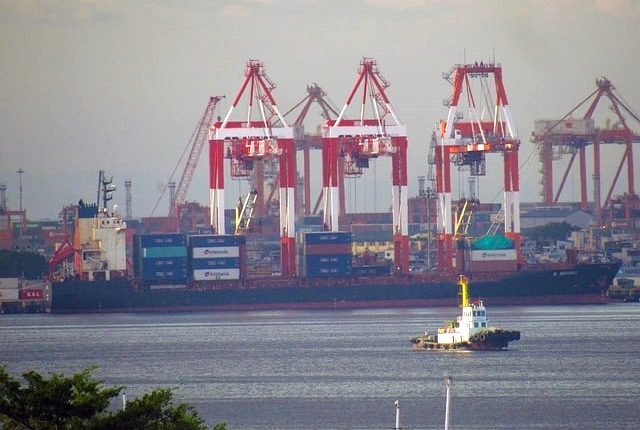Розуміння зниження тарифів
Торгово-промислова палата Філіппін (PCCI) визнала нещодавнє зниження тарифної ставки на філіппінський експорт до Сполучених Штатів з 20% до 19% позитивним зрушенням. Хоча ця зміна розглядається як вигідна, вона не сприймається як переломний момент для експортного сектору.
Крок у правильному напрямку
Президент PCCI Енуніна Мангіо поділилася думками про те, як навіть скромний зниження на один відсотковий пункт може змінити ситуацію. Очікується, що це коригування знизить вартість філіппінської продукції на висококонкурентному ринку США, особливо порівняно з товарами з країн, які стикаються з вищими тарифами. Це зниження надає експортерам трохи більше гнучкості в цінових переговорах, що особливо важливо для мікро-, малих і середніх підприємств (ММСП). Це може призвести до значної економії витрат, збільшення прибутковості та покращення цінової конкурентоспроможності.
Вплив на обсяги експорту
Незважаючи на оптимізм щодо скоригованого тарифу, PCCI висловила реалістичний погляд. Організація підкреслює, що просте зниження тарифів навряд чи спричинить масовий сплеск обсягів експорту. Натомість, наслідки цієї зміни можуть спостерігатися насамперед у конкретних галузях, які вже займаються експортом відповідних товарів.
Ширші фактори, що впливають на експорт
Хоча тарифні ставки є ключовими, вони є лише однією частиною пазла, коли йдеться про обсяги експорту. PCCI підкреслює, що такі фактори, як загальні економічний попит, глобальна конкуренція, витрати на логістику та виробничі виклики часто можуть переважити вплив тарифних змін.
Проблеми, з якими стикаються експортери
- Витрати на логістику: Зростання витрат, пов'язаних з транспортуванням та обробкою, може значно послабити потенційні вигоди від будь-якого зниження тарифів.
- Виробничі виклики: Питання, пов’язані з інфраструктурою, вартістю ресурсів і бюрократичною ефективністю, залишаються перешкодами, які експортери повинні долати.
- Нетарифні бар'єри: Норми та стандарти, які не підпадають під тарифну класифікацію, можуть створювати значні перешкоди для торгівлі.
Урядова підтримка та рекомендації
PCCI закликає уряд активізувати переговори щодо глибшого та ширшого пом’якшення тарифів на різні види продукції. Усунення нетарифних бар’єрів і вдосконалення внутрішніх правил мають важливе значення для підвищення конкурентоспроможності філіппінського експорту. Ці заходи можуть призвести до покращення торговельного середовища, сприятливого для зростання.
Заохочення внутрішніх реформ
Організація надала кілька рекомендацій, спрямованих на сприяння кращому бізнес-клімату:
- Перегляд торговельних угод з метою включення більшої кількості продуктів до категорій зі зниженими тарифами.
- Подолання регуляторних перешкод, які виходять за рамки тарифних проблем, таких як санітарні та фітосанітарні заходи.
- Сприяння кращій цифровій інфраструктурі, яка сприяє ефективності торговельних операцій.
- Впровадження стимулів, які можуть сприяти розвитку міжнародної торгівлі.
Бачення майбутньої торгівлі
Натхненна початковим зниженням тарифів, PCCI висловлює сподівання, що це лише початок. Манджо та її команда виступають за комплексні стратегії для підвищення філіппінського експорту. Вони закликають до відновлення дискусій щодо двосторонньої торговельної угоди та розширення існуючих програм торговельних преференцій.
Дивлячись у майбутнє
Ці розмови не тільки обіцяють створити більш ефективний експортний ландшафт, але й підкреслюють важливість вирішення питань логістики в рамках торгівлі. Покращена логістика може оптимізувати операції, зменшити витрати та сприяти глобальній конкурентоспроможності експортерів.
Висновок
Розмова про коригування тарифів та їхній вплив на філіппінський експорт є надзвичайно важливою. Хоча скорочення може здатися невеликим, воно підкреслює важливість прийняття змін у логістичному ландшафті. За умови впровадження правильних заходів компанії зможуть краще орієнтуватися в складнощах глобального ринку, підвищуючи конкурентоспроможність і продуктивність.
GetTransport.com виділяється як ідеальний партнер у цій подорожі, пропонуючи доступні глобальні рішення для перевезення вантажів, адаптовані до різноманітних потреб — від переїздів офісів і будинків до доставки великогабаритних товарів, таких як меблі та транспортні засоби. Співпраця з GetTransport.com не тільки полегшує логістику, а й спрощує доставку та розподіл товарів, забезпечуючи ефективність і рентабельність.
Зрештою, очевидно, що навіть найкращі ідеї та відгуки бліднуть порівняно з особистим досвідом. Використання GetTransport.com дає змогу особам, які приймають рішення, орієнтуватися в логістичній сфері, уникаючи непотрібних витрат. Прозорість, зручність і широкий спектр послуг платформи бездоганно узгоджуються з контекстом міжнародних перевезень і експортної динаміки. Бронюйте зараз, що дає вам перевагу з GetTransport.com.

 Вплив зниження тарифів на філіппінський експорт та логістику">
Вплив зниження тарифів на філіппінський експорт та логістику">